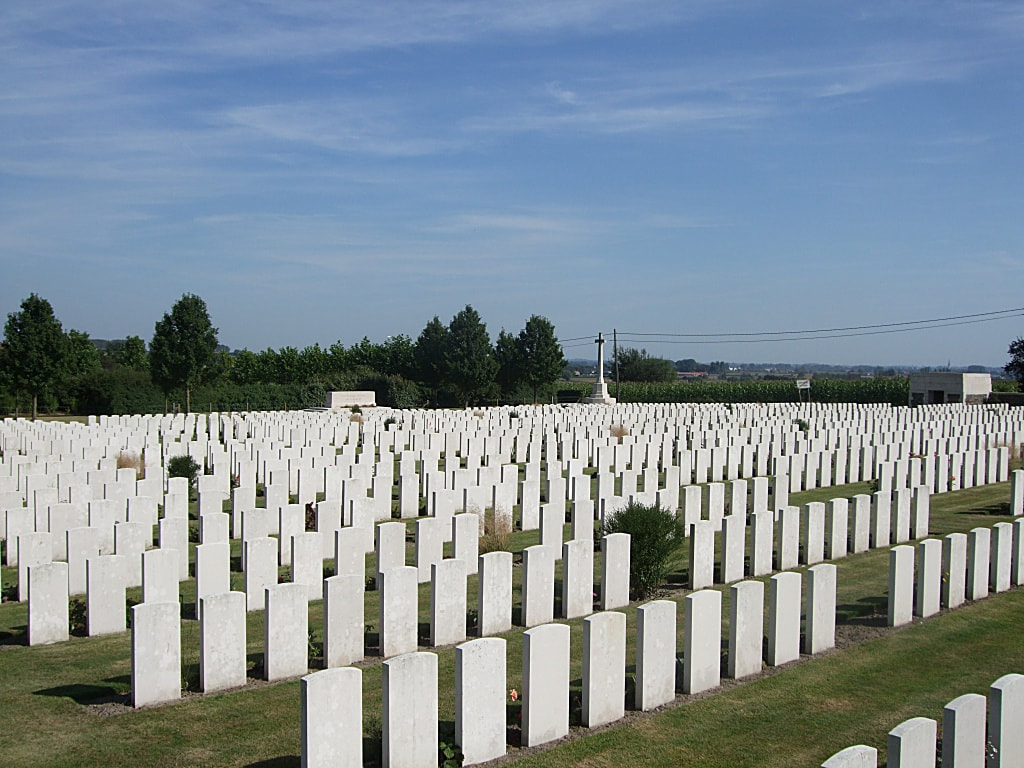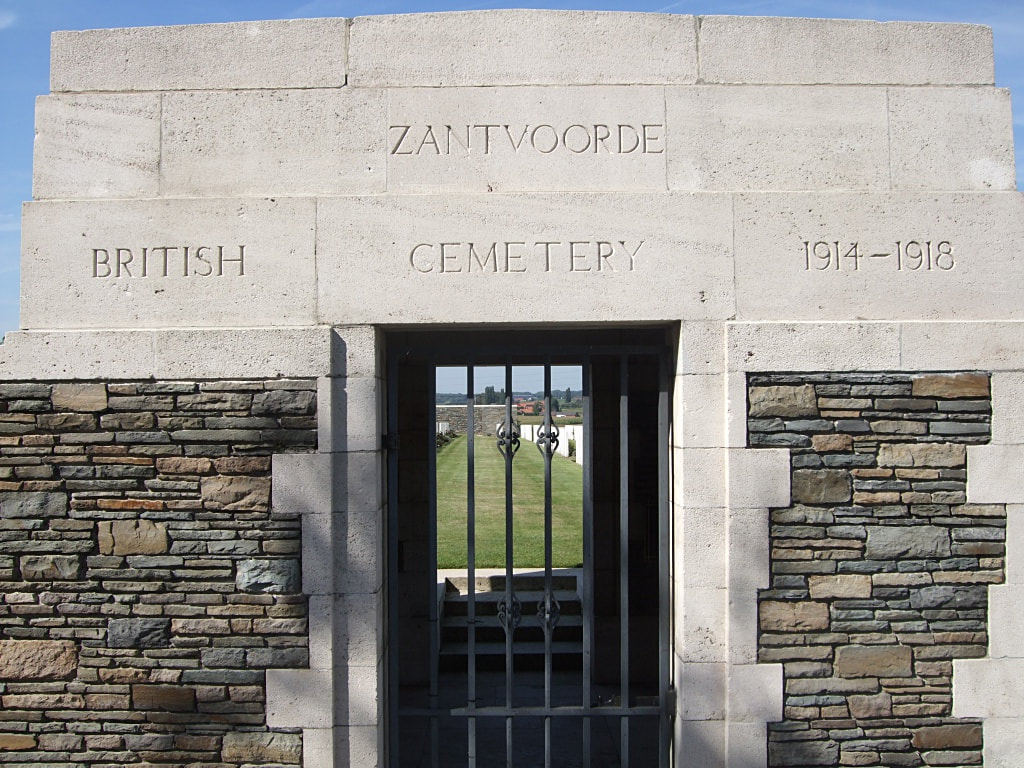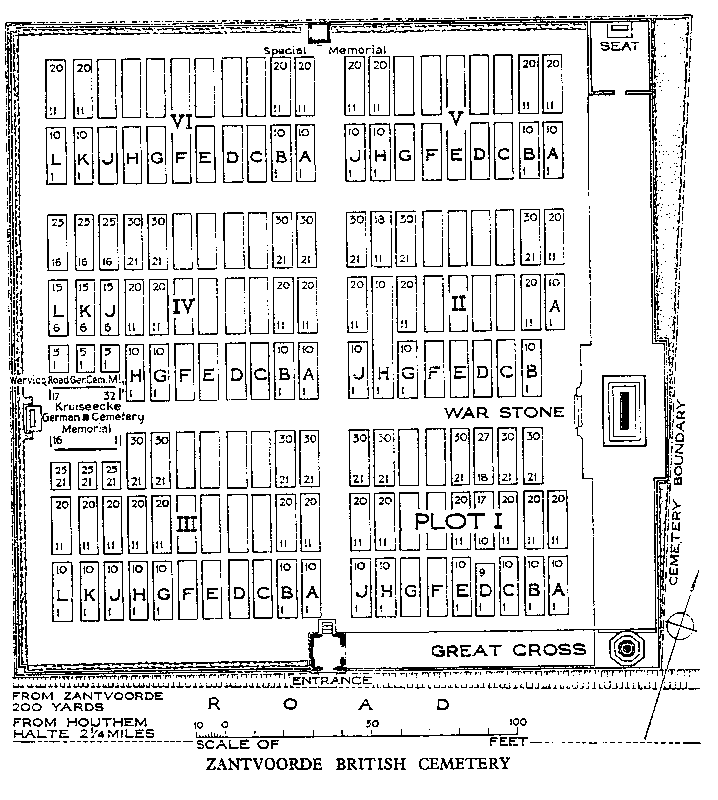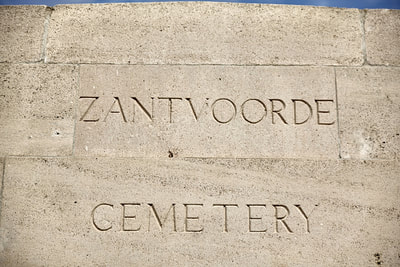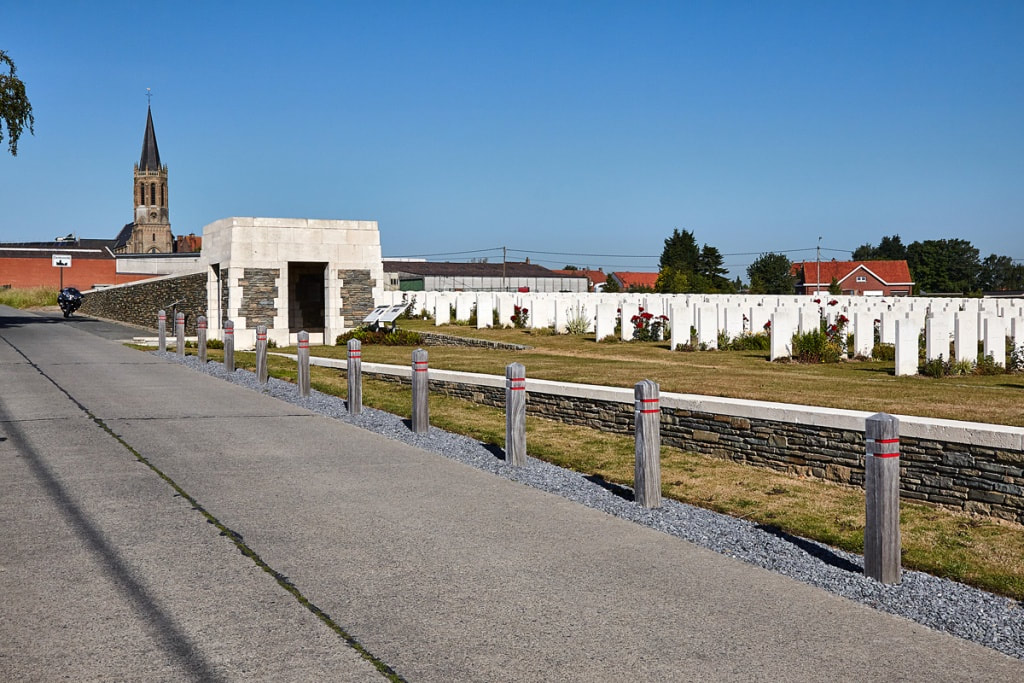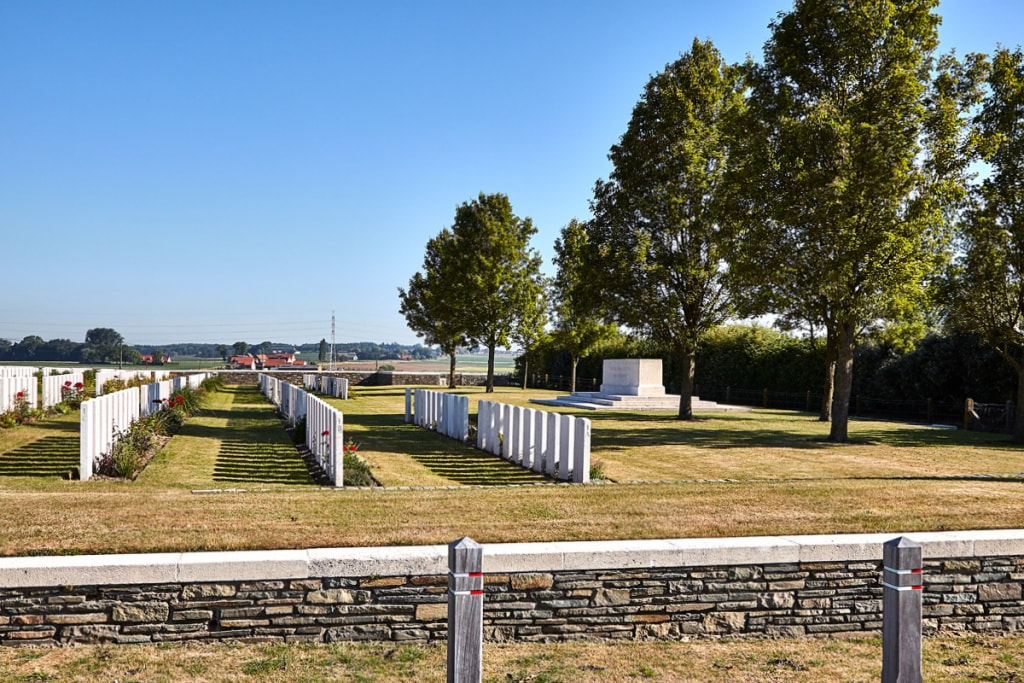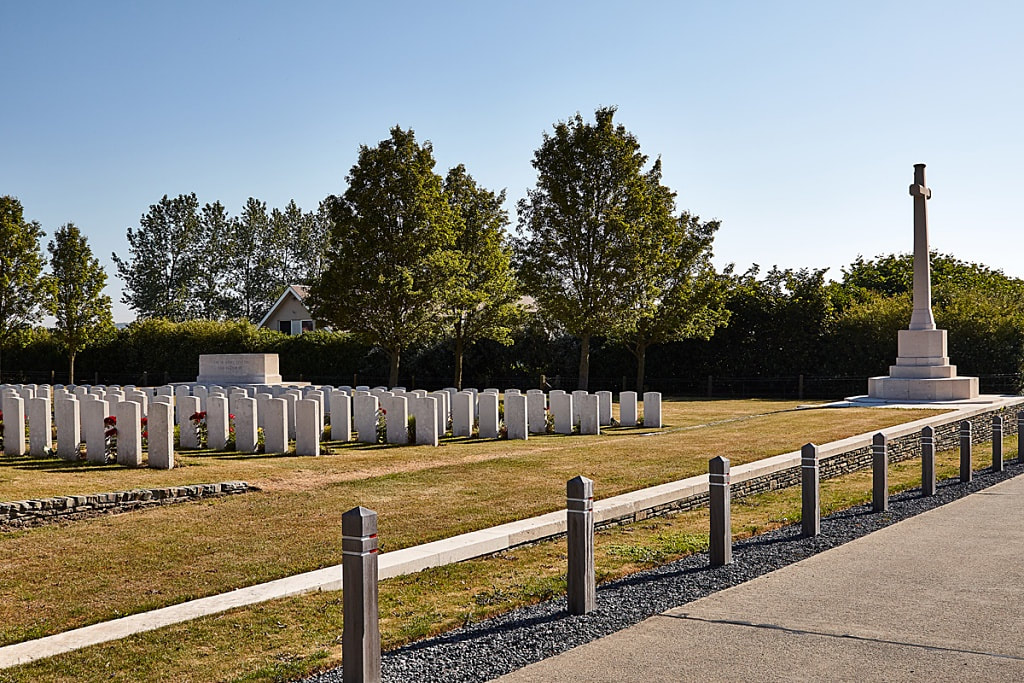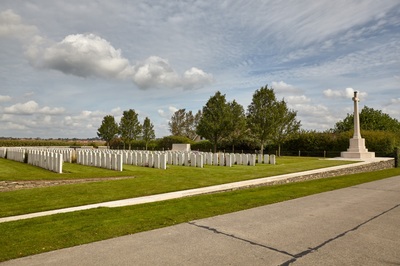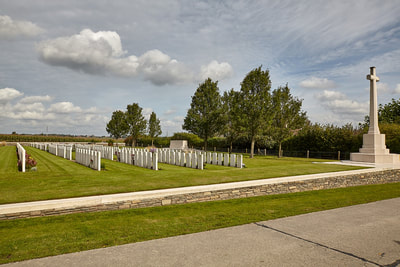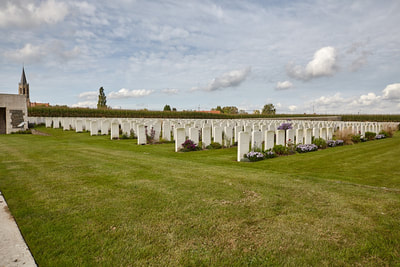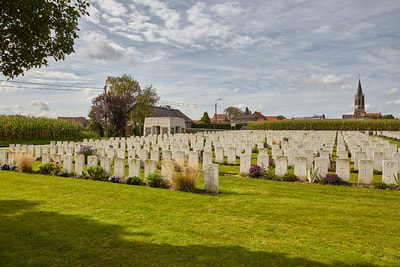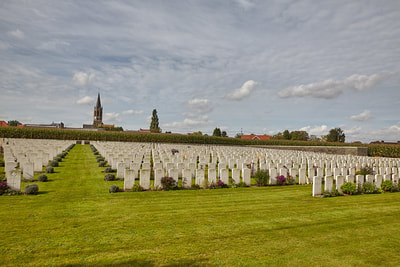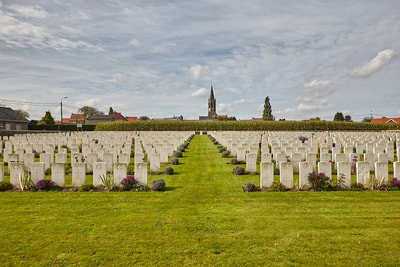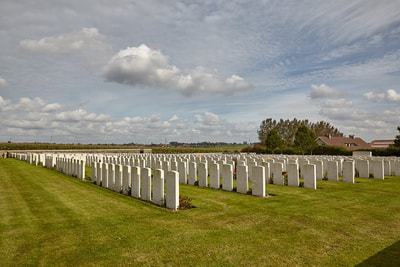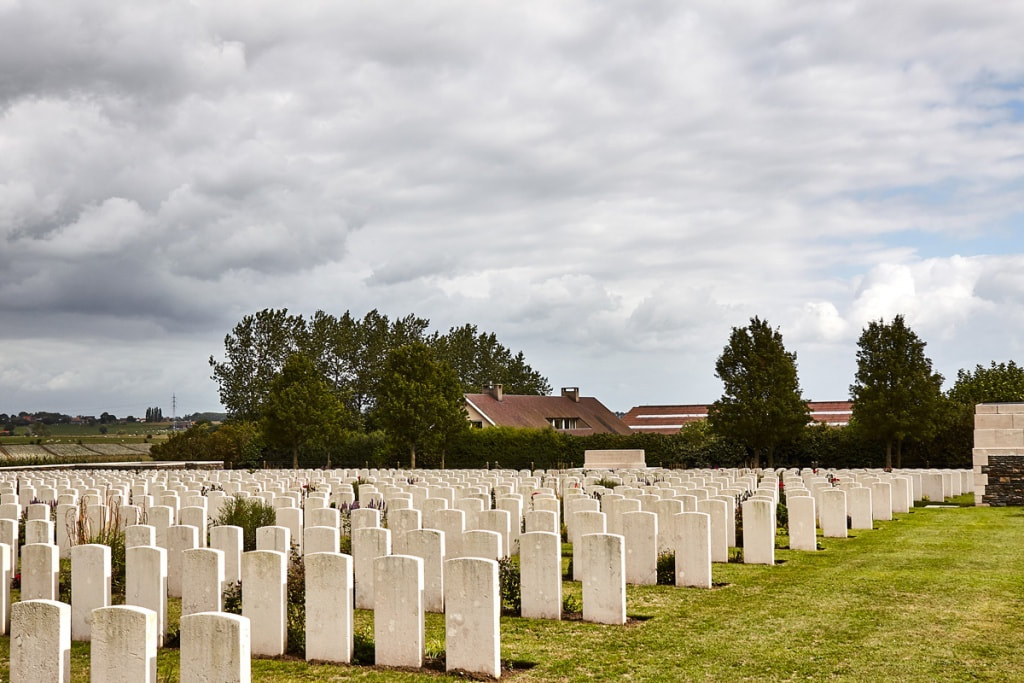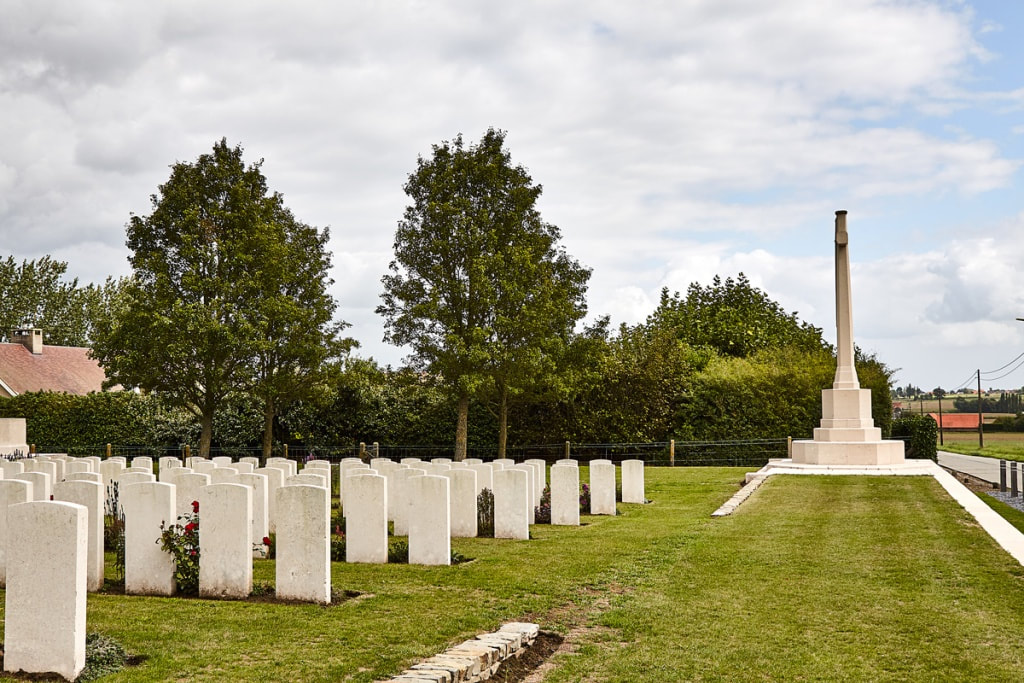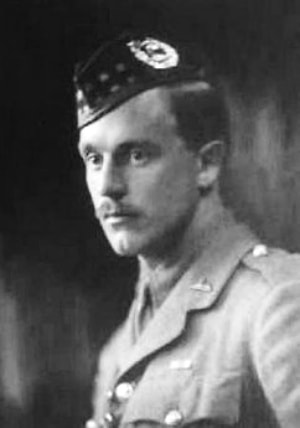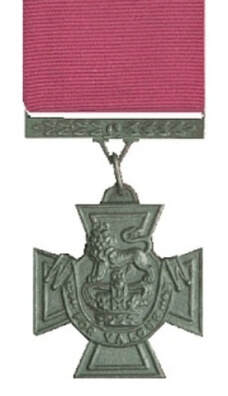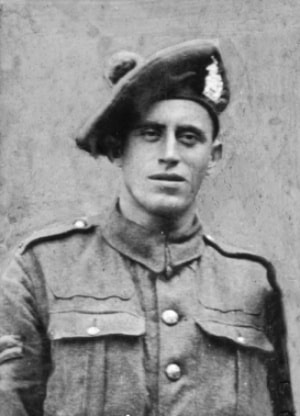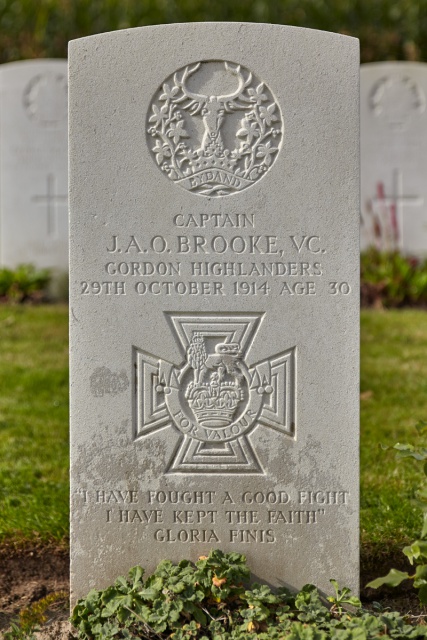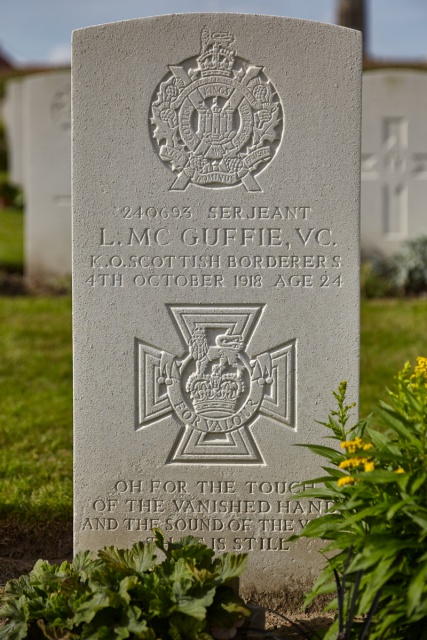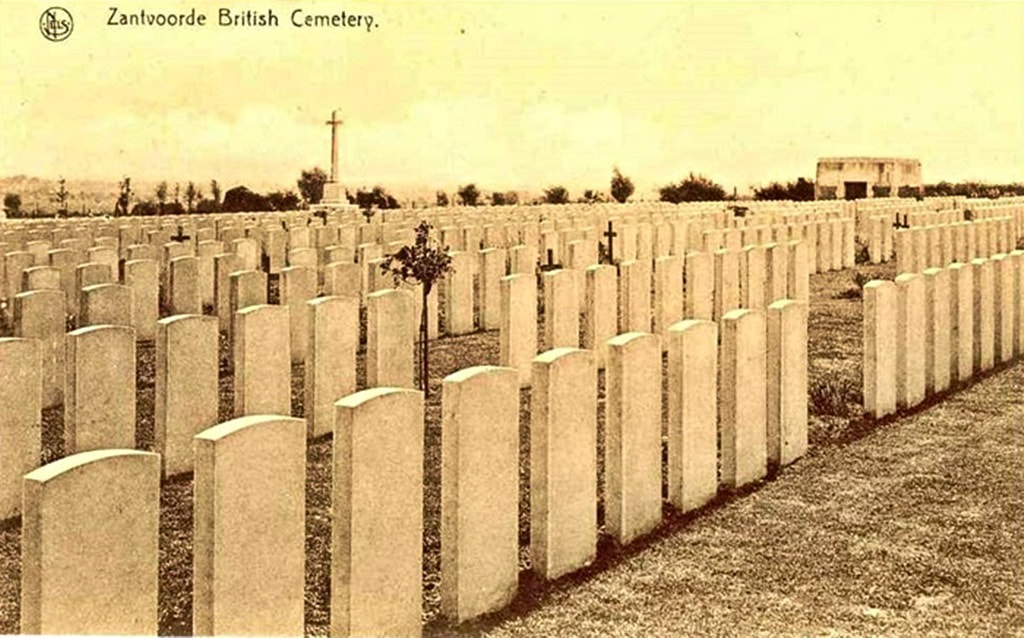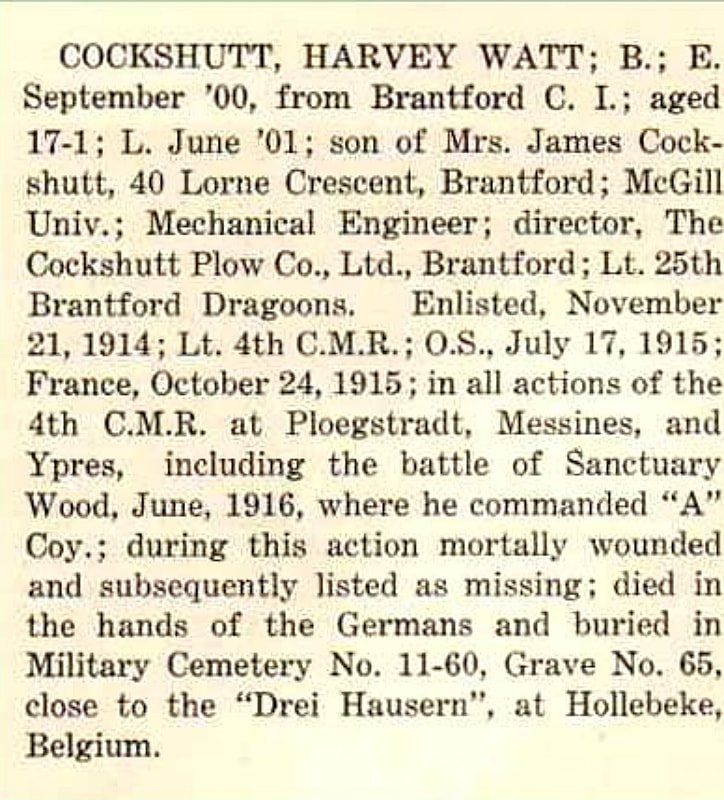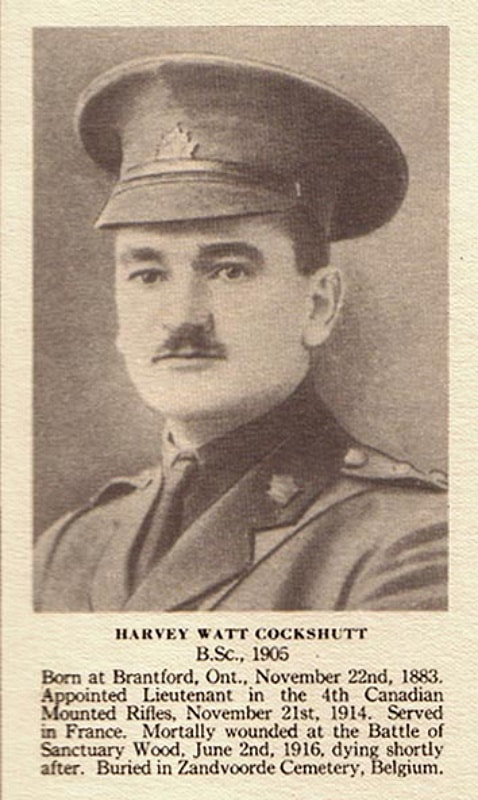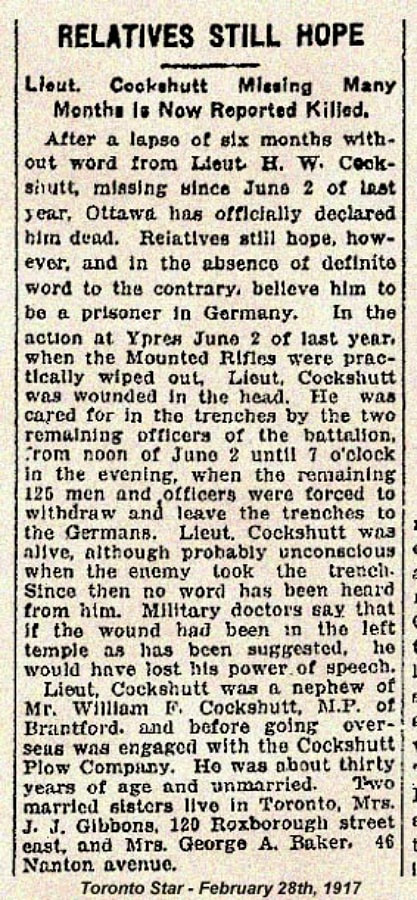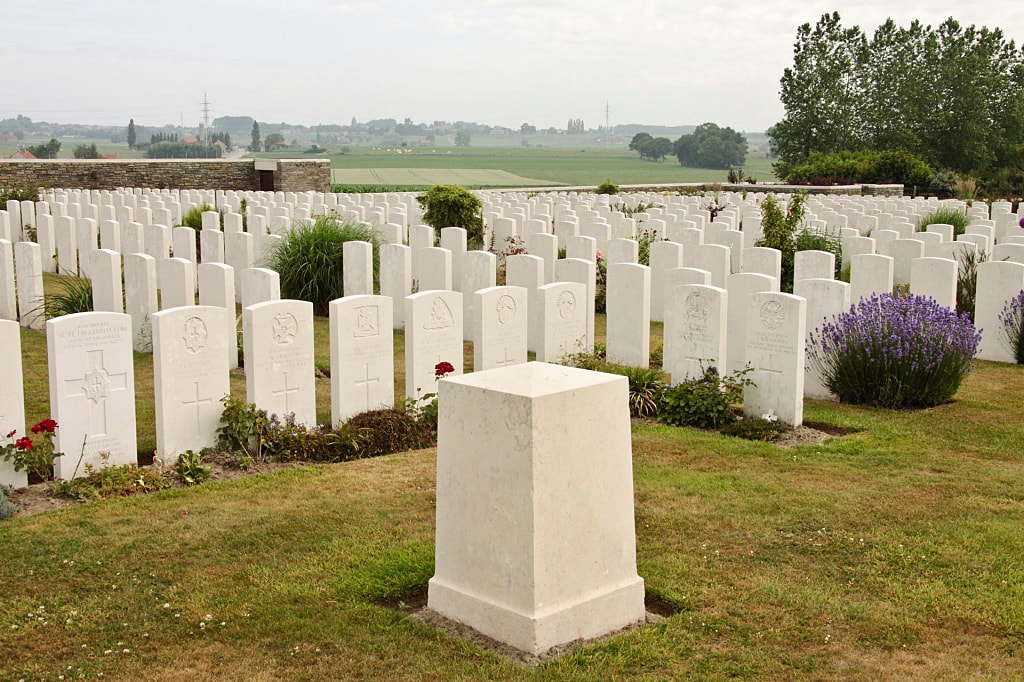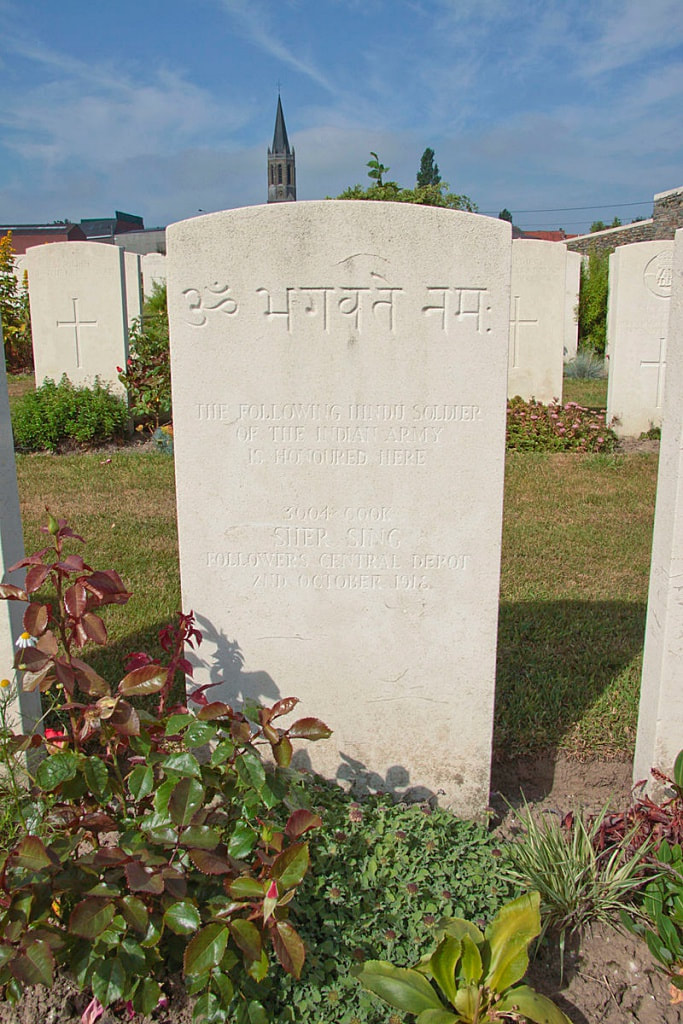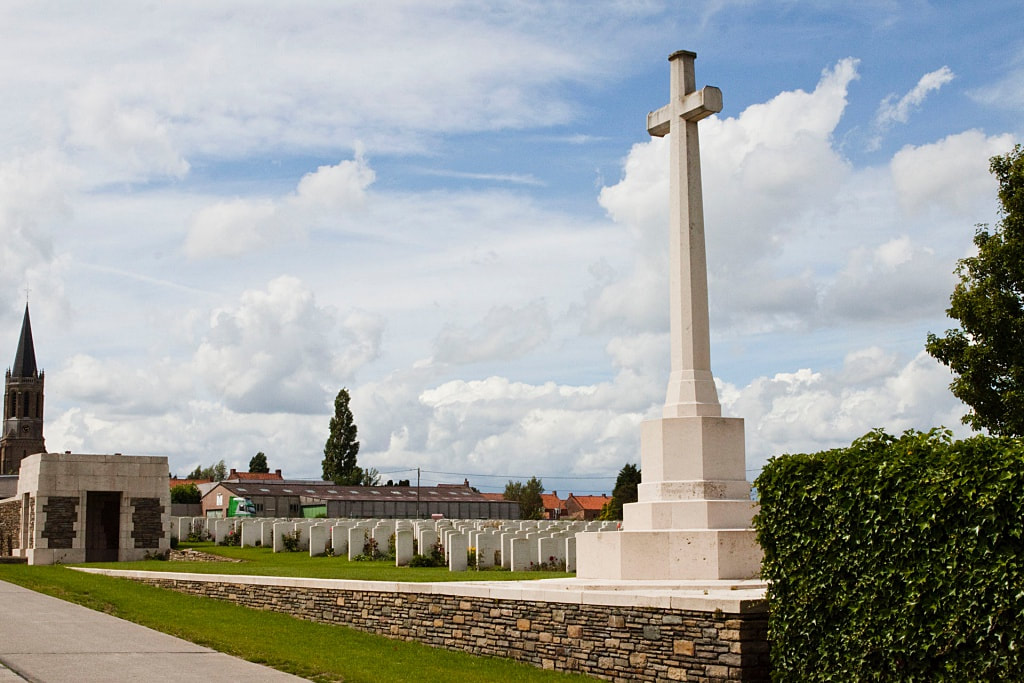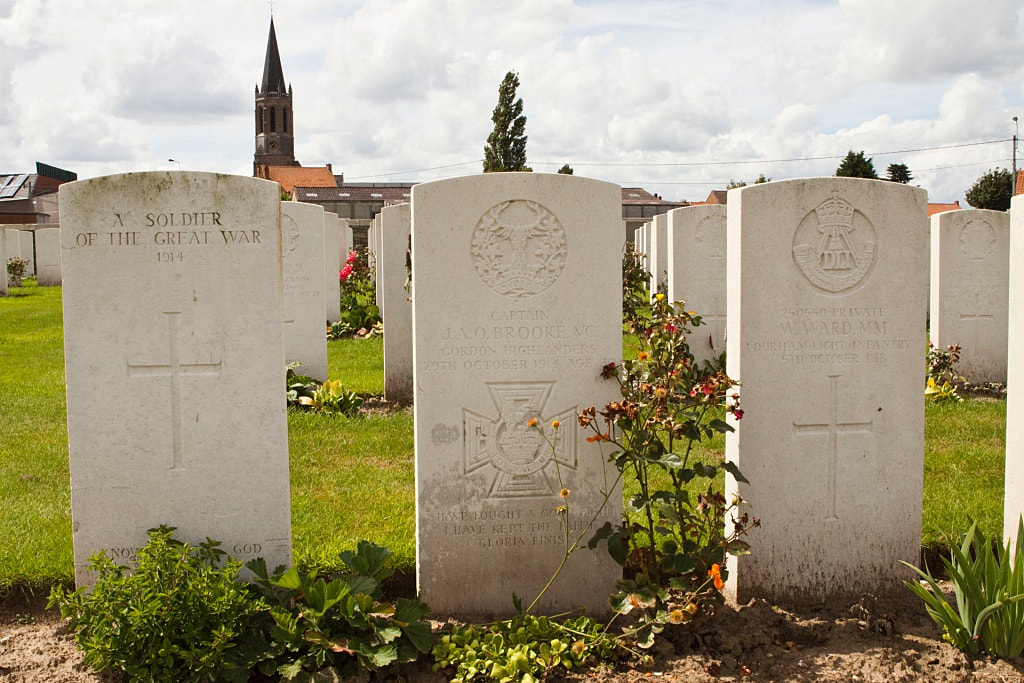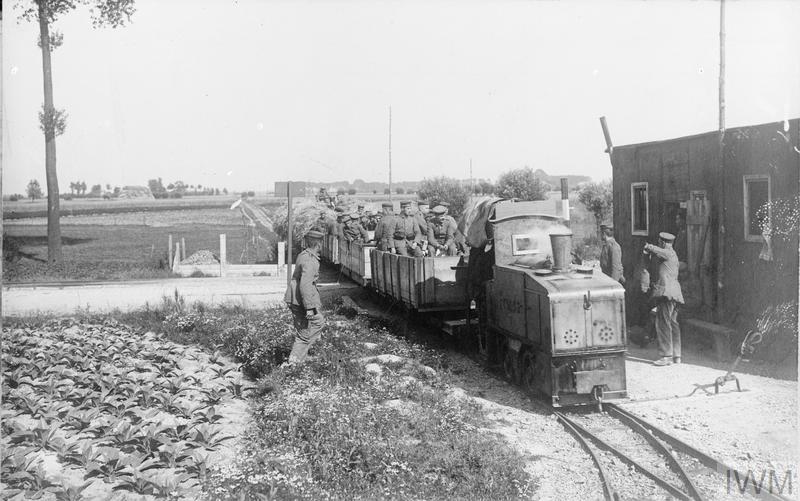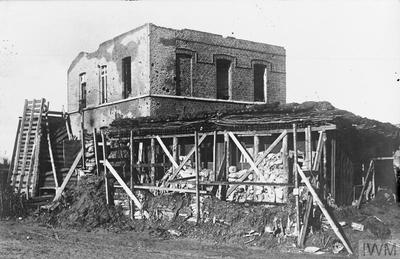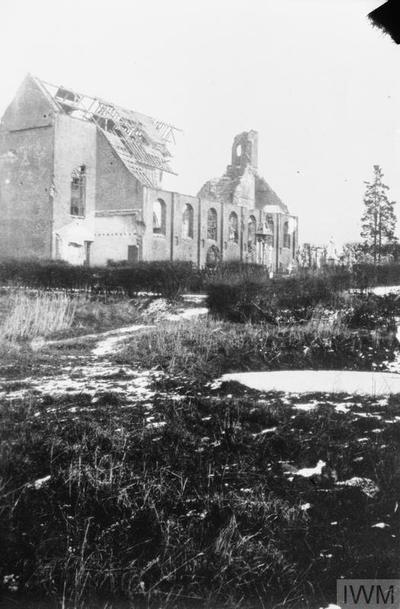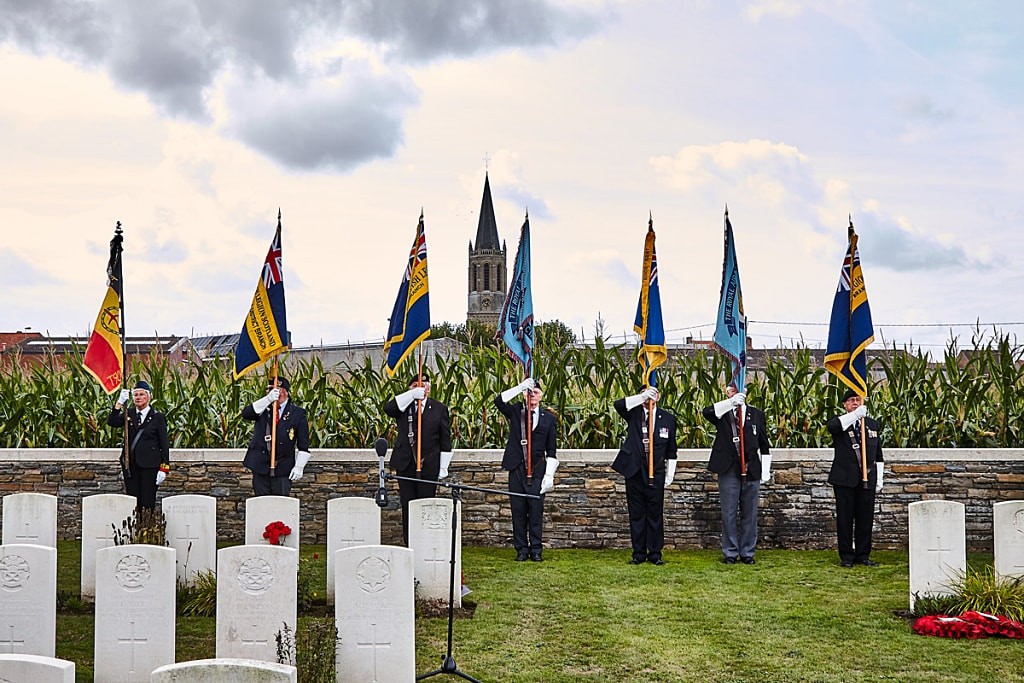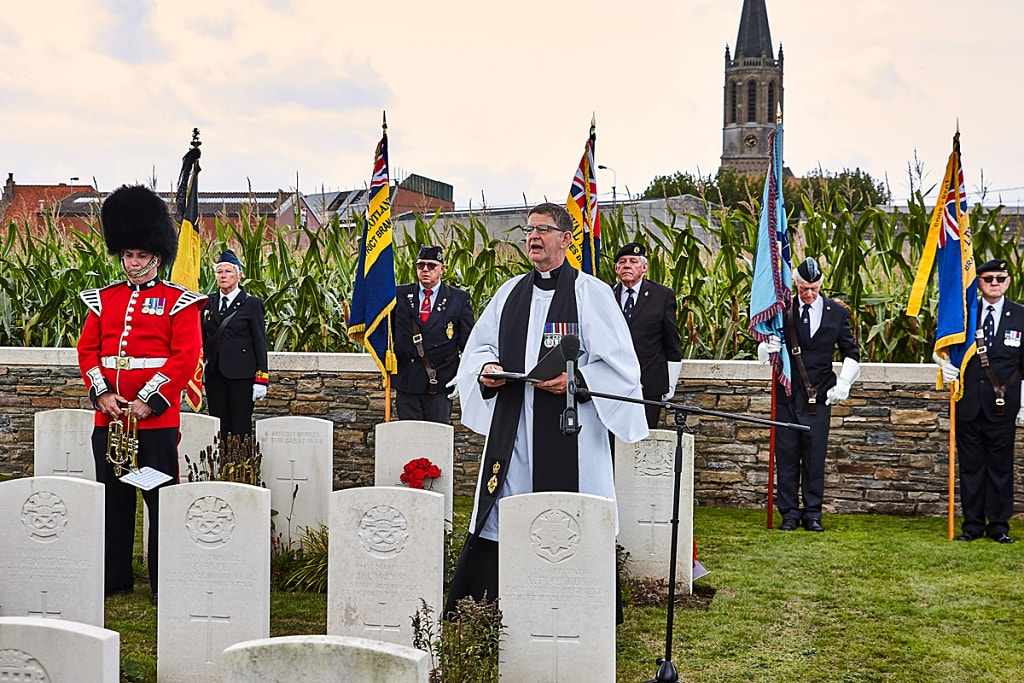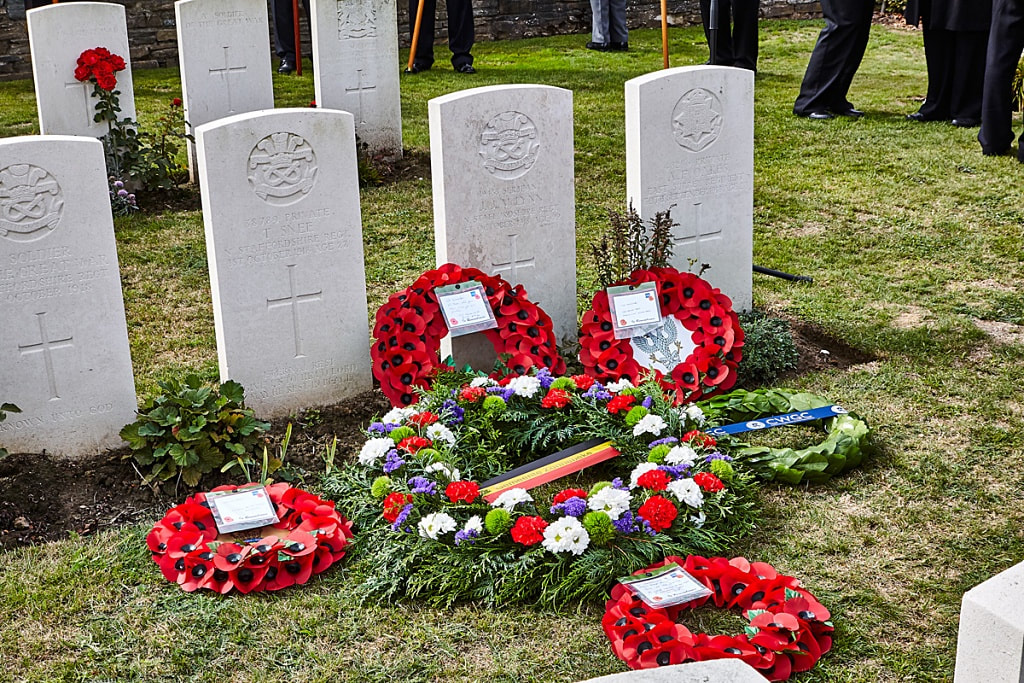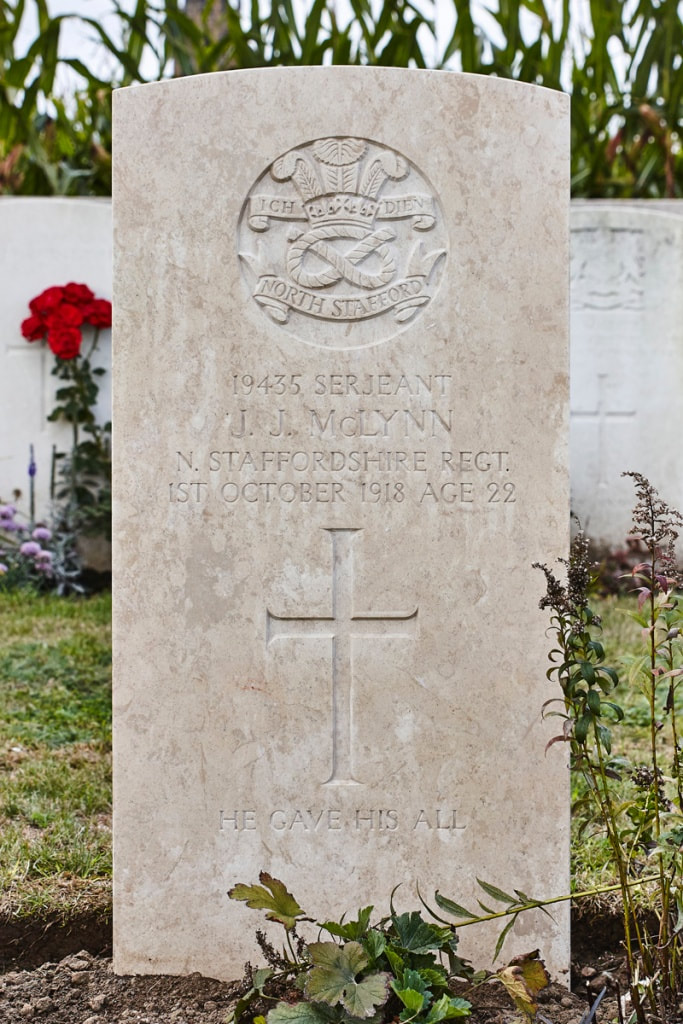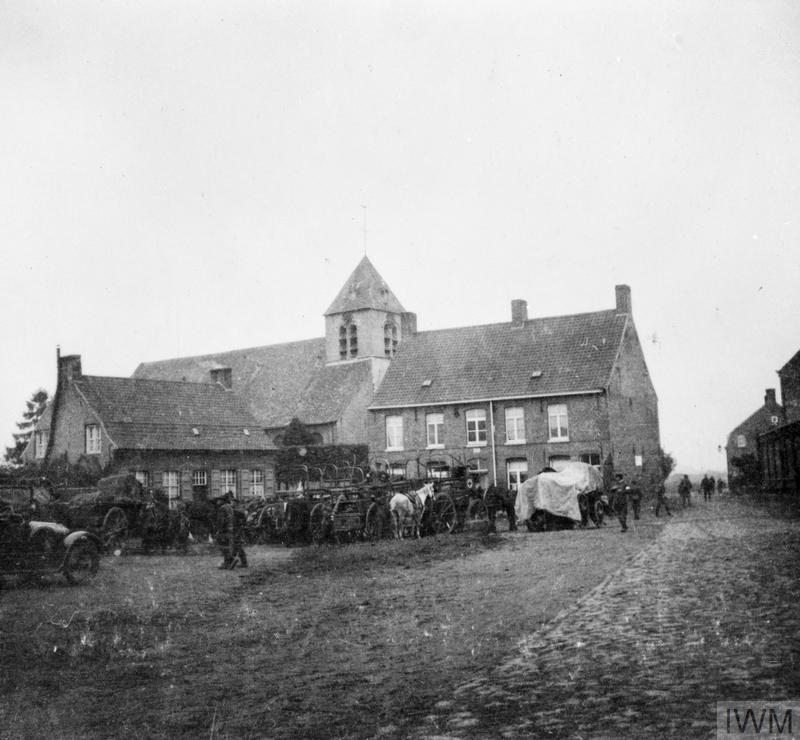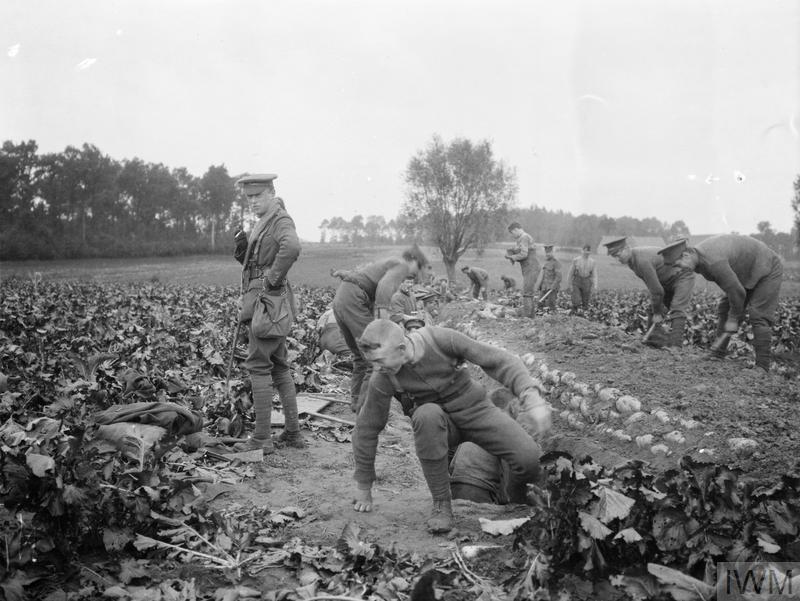ZANTVOORDE BRITISH CEMETERY
West-Vlaanderen
Belgium
GPS Coordinates - Latitude: 50.81345, Longitude: 2.98357
Location Information
Zantvoorde British Cemetery is located 8 Kms south-east of Ieper town centre, on the Kruisekestraat a road leading from the Meenseweg (N8), connecting Ieper to Menen.
From Ieper town centre the Meenseweg is located via Torhoutstraat and right onto Basculestraat. Basculestraat ends at a main cross roads, directly over which begins the Meenseweg.
7.5 Kms along the Meenseweg in the village of Geluveld lies the right hand turning onto Zandvoordestraat. At the end of the Zandvoordestraat is the left hand turning onto Kriusekestraat.
The cemetery itself is located 100 metres along the Kruisekestraat on the left hand side of the road.
Visiting Information
Wheelchair access to this cemetery is possible with some difficulty.
Historical Information
On 30 October 1914, the village of Zantvoorde (now Zandvoorde) was held by the 1st and 2nd Life Guards, numbering between 300 and 400 men. It was bombarded for over an hour with heavy guns and then taken by the 39th German Division and three attached battalions. The whole front of the 3rd Cavalry Division was driven back to the Klein-Zillebeke ridge. The village could not be retaken and remained in German hands until 28 September 1918. The Household Cavalry Memorial, unveiled by Lord Haig in May 1924, stands on the South side of the village at the place where part of the Brigade was annihilated in 1914.
Zantvoorde British Cemetery was made after the Armistice when remains were brought in from the battlefields and nearby German cemeteries. Many were those of soldiers who died in the desperate fighting round Zantvoorde, Zillebeke and Gheluvelt in the latter part of October 1914.
There are now 1,583 servicemen of the First World War buried or commemorated in the cemetery. 1,134 of the burials are unidentified. Special memorials commemorate 32 soldiers buried in two of the German cemeteries whose graves could not be found on concentration. The cemetery also contains one Second World War burial.
The cemetery was designed by Charles Holden and William Harrison Cowlishaw
Total Burials: 1,584.
World War One identified Casualties: United Kingdom 442, Canada 5, Australia 1, India 1. Total 449.
World War One Unidentified Casualties: 1,134.
World War Two Identified Casualty: United Kingdom 1. Total 1.
Images in this gallery © Geerhard Joos
Captain James Anson Otho Brooke V. C.
2nd Bn. Gordon Highlanders
Killed in action 29th October 1914, aged 30.
Plot VI. E. 2.
Son of Sir Harry Vesey Brooke, K.B.E., and Lady Brooke, of Fairley, Countesswells, Aberdeenshire. Awarded the Sword of Honour at Sandhurst.
His headstone bears the inscription "I Have Fought A Good Fight. I Have Kept The Faith" Gloria Finis"
Citation
An extract from "The London Gazette," dated 16th Feb., 1915, records the following:-"For conspicuous bravery and great ability near Gheluvelt on the 29th October, in leading two attacks on the German trenches under heavy rifle and machine-gun fire, regaining a lost trench at a very critical moment. He was killed on that day. By his marked coolness and promptitude on this occasion Lieutenant Brooke prevented the enemy from breaking through our line, at a time when a general counter-attack could not have been organised."
240693 Serjeant Louis McGuffie V. C.
1st/5th Bn. King's Own Scottish Borderers
4th October 1918, aged 24.
Plot I. D. 12.
Son of Mrs. Catherine McGuffie, of 1, North Main St., Wigtown, Wigtownshire.
His headstone bears the inscription "Oh For The Touch Of The Vanished Hand And The Sound Of The Voice That Is Still"
Citation
An extract from "The London Gazette," dated 13th Dec., 1918, records the following:-"For most conspicuous bravery and resourceful leadership under heavy fire near Wytschaete on 28th September, 1918. During the advance to Piccadilly Farm, he, single-handed, entered several enemy dugouts and took many prisoners, and during subsequent operations dealt similarly with dugout after dugout, forcing one officer and twenty-five other ranks to surrender. During the consolidation of the first objective he pursued and brought back several of the enemy who were slipping away, and he was also instrumental in rescuing some British soldiers who were being led off as prisoners. Later in the day, when in command of a platoon, he led it with the utmost dash and resource, capturing many prisoners. This very gallant soldier was subsequently killed by a shell.
Headstones
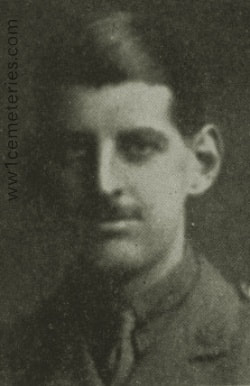
Captain
Henry Ewart Bethune, M. C.
12th Bn. Highland Light Infantry
30th September 1918, aged 25.
Plot I. D. 7.
Son of Henry J. and Laura Bethune, of Toronto, Canada.
Henry Ewart Bethune, M. C.
12th Bn. Highland Light Infantry
30th September 1918, aged 25.
Plot I. D. 7.
Son of Henry J. and Laura Bethune, of Toronto, Canada.

Lieutenant
Harvey Watt Cockshutt
4th Canadian Mounted Rifles Battalion
2nd June 1916.
Plot V. J. 5.
Click on image to enlarge
Harvey Watt Cockshutt
4th Canadian Mounted Rifles Battalion
2nd June 1916.
Plot V. J. 5.
Click on image to enlarge

7854 Private
James Duguid
2nd Bn. Gordon Highlanders
26th October 1914, aged 29.
Plot II. G. 29.
Son of William and Barbara Duguid, of Froghall Terrace, Aberdeen; husband of Margaret Bisset Duguid, of 420, Wellesley St., Toronto, Canada.
James Duguid
2nd Bn. Gordon Highlanders
26th October 1914, aged 29.
Plot II. G. 29.
Son of William and Barbara Duguid, of Froghall Terrace, Aberdeen; husband of Margaret Bisset Duguid, of 420, Wellesley St., Toronto, Canada.

Captain
John Herbert Joseph
17th Bn. The King's (Liverpool Regiment)
1st August 1917
Plot III. J. 4.
John Herbert Joseph
17th Bn. The King's (Liverpool Regiment)
1st August 1917
Plot III. J. 4.
Images in this gallery © Werner Van Caneghem
Rededication Ceremony 6th September 2017
Pictures © Geerhard Joos
A rededication service was held on Wednesday 6 September at 2.30pm at the CWGC’s Zantvoorde British Cemetery, Belgium, for Serjeant James Joseph McLynn of the 4th Battalion North Staffordshire Regiment. His regiment was fighting near the village of Zantvoorde and due to their efforts managed to capture it. On 1 October 1918, they were at Ten Brielen (a neighbouring village) when they were heavily shelled resulting in several casualties, one of which was James.
He was originally buried as an unknown soldier in Plot 4, Row K, Grave 24 but through research has now been identified. The service was organised by the Joint Casualty and Compassionate Centre (JCCC) and was attended by members of the regiment, local dignitaries, general public and his family. The CWGC provided the new headstone.
He was originally buried as an unknown soldier in Plot 4, Row K, Grave 24 but through research has now been identified. The service was organised by the Joint Casualty and Compassionate Centre (JCCC) and was attended by members of the regiment, local dignitaries, general public and his family. The CWGC provided the new headstone.


